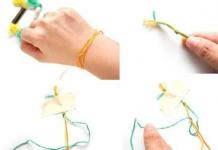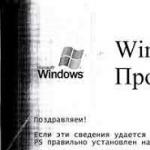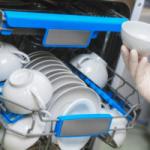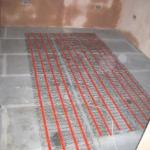For metal, it is one of the ways to connect two surfaces together, without using the effects of high temperature conditions. Welding is carried out due to the deep penetration of a special adhesive into the surface of those parts that need such welding. Thus, this welding composition is a kind of glue that can connect even bulky parts.
Main characteristics of use
Cold welding for metal is a relatively new method, but at the same time it has already gained great popularity in the following cases:
- For sealing cracks in the body of the vehicle.
- It can be used in plumbing work, namely for patching pipes, various fittings, pumps and many other equipment.
- With its help, gas technical repairs are carried out.
- And, of course, high-quality sealing of holes in window frames can be carried out.
High temperature cold welding for metal is designed for welding cracks and holes in iron and steel. Heat resistance is up to 1316 o C.
It is forbidden to use the composition for other purposes, as this will lead to a decrease in the strength of the weld.
Cold welding for metal, which is quite affordable, due to its high resistance to high temperatures, can be used for mufflers, crosses, catalytic converters, exhaust pipes, boilers and furnaces, agricultural equipment, exhaust manifolds, heating appliances, ship engines, as well as everywhere, where conventional welding cannot be used.
In fact, cold welding for metal is a kind of composite that has excellent inert properties with respect to flammable products.

Cold welding can be of two types
As a result of long and laborious testing, it was created for the type of cold welding, where each option has its own advantages and features of use. Allocate welding:
- liquid.
- plastic.
What is liquid and plastic cold welding?
As a basis for creating liquid welding, epoxy resin is used in combination with certain hardeners, that is, this type of welding is two-component. There is no unpleasant pungent smell, which is the main advantage of this type of welding.
As for plastic cold welding, here the material is provided in the form of a small bar, like children's plasticine. It can be single-layer and double-layer, depending on the type chosen.

Cold welding for metal: reviews
According to user reviews, cold welding for work does not require a powerful source of electricity to heat the workpieces to be welded. In addition, the weld during such welding is not contaminated with impurities, has good uniformity and high rates of corrosion stability and electrical resistance. Preparation of parts for welding is quite simple.
What should I pay attention to when choosing cold welding?
The correctness of use, the quality of the finished surface and much more depend on the quality and the most important technical qualities of the type of cold welding you use. And that is why it is necessary to pay attention to how to choose the right real best cold welding.
First, decide on the type of surfaces that you will weld.

Select the temperature regime during which work will be carried out on welding the materials together, since the means of cold welding may differ in the optimal temperature regimes of use.
Cold welding for metal: instructions for use
In order to properly glue the surfaces together through the use of high-quality cold welding, it is recommended to pay attention to the special instructions, which will help to cope with all the difficulties and questions that arise.
Cold welding for metal: instructions for use
- First of all, it is necessary to properly prepare the surface to be bonded. Here it is necessary to carefully clean the places where the special welding seam will take place, since the quality of the work performed depends on this.
- Next, you should degrease the surface before performing all the tasks. Here you can get rid of fat on the surface using a special anti-silicone solution, which has all the most necessary qualities.
- The third stage is the preparation of the welding mixture. Here, the preparation method depends on the type of cold welding you use, so try to read the instructions individually in order to know how to properly use the cold welding agent of your choice.
- The last step is repairing the damage. First you need to apply the selected mixture to the desired area and thoroughly level the mass so that it takes the desired shape. But remember that all this must be done quickly, as welding sets quickly. But for complete drying it takes twenty-four hours, because only then the material acquires all the required qualities.

The main rules for working with cold welding
Of course, like any other material, cold welding for metal has its own rules and subtleties of use, which you definitely need to pay attention to in order to choose and use the tool correctly.
- Liquid mixtures of cold welding, which are produced in syringes, are recommended to be mixed well before use in a separate container, and not directly on the surface to be glued.
- It is recommended to use gloves for work.
- If you are using plastic cold welding, then in this case it is best to trim the material from a common bar in small pieces and use them gradually, depending on the need. Thanks to all this, welding can be carried out rationally and correctly.
- Modern mixtures can eliminate the need for degreasing the surface with some additional liquids.

Precautionary measures
Cold welding for metal can irritate the skin and mucous membranes of the eyes. In case of contact, rinse eyes with running water as soon as possible. If accidentally swallowed, drink plenty of water or milk and call a doctor immediately. Be sure to keep this material away from children if you want to keep them healthy!
After applying cold welding to the surface, it is necessary to ensure the complete absence of external load for the time indicated in the instructions for use.
Cold welding for metal, the price of which is quite low (from 40 rubles per 60 grams), is a new tool in the world of materials. This technology allows you to more than recoup the investment spent.
Glue "cold welding" for metal for various types of materials is one of the most popular means for domestic and professional repairs.
What is cold welding? This question is asked by many of those who are going to use this tool for quickly connecting metals. No doubt, many have heard about cold welding, and a sufficient number of people have already recognized all the advantages of this technology. But, unfortunately, not all of those home craftsmen who have already managed to try to connect metal parts using such a tool were able to appreciate all of its unique characteristics.
The main reason for this situation is that very often our people do not consider it necessary to carefully read the instructions, which stipulate all the nuances of using a particular device or technology. That is why we want to devote this article to all issues related to the rules of use and the scope of such a wonderful tool, which, no doubt, is cold welding.
Varieties of cold welding
In fact, cold welding is an adhesive with a high degree of plasticity, made on the basis of the well-known epoxy resin. By its structure, this adhesive can be two-component, then it can be stored for a long time, or one-component, which must be applied as quickly as possible so as not to face the loss of its adhesive properties.
As a rule, such a tool is produced by manufacturers in the form of a two-layer cylinder, the outer shell of which consists of a hardener, and the inner core is an epoxy resin mixed with metal dust. Such an additive in the form of metal dust is necessary in order to give the resulting joint high strength and reliability. It contains cold welding and other additives that give it, as well as the joints obtained with its help, unique characteristics. Manufacturers keep most of these additives a secret, but the most famous of them is sulfur.
Cold welding is classified mainly according to its area of use, that is, according to those materials that can be connected using its various types. So, today the following types of this tool are successfully used.
Such a tool is actively and successfully used not only by home craftsmen, but also by motorists, as it allows you to quickly and effectively solve many problems associated with the operation of the car. The connections obtained with its help make it possible not only to forget about the problem that has arisen for a short time, but also to operate the restored parts for quite a long time.
However, it should be borne in mind that cold welding demonstrates itself optimally when connecting those parts that do not experience significant loads during operation. Such a tool has also found wide application in the repair of plumbing devices in which it is necessary to quickly eliminate the leak that has arisen. But no matter how reliable it is, you should always remember that it only serves to eliminate the problem that has arisen only for a while. At the first opportunity, you should use the methods of overhaul.
Glue "Cold welding" for various types of plasticThis tool, which is less common, is used, as its name suggests, to perform quick repairs on plastic parts. Such glue finds application both at manufacturing enterprises and for repairs at home. Most often, the need to use such a tool arises in cases where it is necessary to repair plastic pipes and housings of various devices.

You can also use such glue in cases where it is necessary to make joints of products made of hard rubber. Naturally, such welding has found wide application in the performance of construction and repair work. It should be noted that the linoleum compounds obtained with its help are significantly superior in their characteristics to those for which glue or double-sided tape was used.
We have listed only the main types of cold welding, but there are others that are less common. All these tools are distinguished by high efficiency of obtaining and reliability of connections, provided that all necessary requirements were strictly adhered to when performing work.
Application of cold welding for metal
Cold welding for metal, the instructions for use of which are in each package, is used in almost the same way as other varieties of such a tool. In order to understand how to use such glue correctly, it will be enough to analyze an example with the elimination of leaks in pipelines and containers made of metal. What is convenient, this welding can be used both with empty and filled containers, and even those that are under slight pressure. That is, for example, if you need to eliminate a leak in a car radiator, then it is not at all necessary to drain the liquid from it.

So, the algorithm for working with such glue is as follows.
- First of all, it is necessary to prepare the surface on which the adhesive will be applied. To do this, it is better to use an emery cloth, with which the surface is cleaned from dirt and rust. Such cleaning should be completed if metal with scratches applied to it with sandpaper has become visible on the surface to be treated. Moreover, the deeper and more frequent such scratches are, the more reliable the connection will be.
- Then dry the surface thoroughly. To do this, you can use a regular hair dryer, you do not need any special technical equipment. Of course, cold welding for metal will also cope with wet surfaces, but one cannot count on the high reliability and tightness of such a connection.
- The next step, which will make the resulting connection more reliable, is degreasing the surface. To do this, it is better to use acetone, which will eliminate even minor grease stains on the treated surface.
- Next, we proceed to the preparation of the adhesive composition itself. Since this tool is not liquid, but dense enough, we use a knife to cut off a piece of the required size from the cold welding cylinder. It is very important to cut strictly across the cylinder in order to maintain the original proportions of hardener and epoxy in the resulting piece. The cut off piece must be thoroughly kneaded until a soft and uniform mass is obtained, and so that the product does not stick to the hands, you can periodically moisten them with water.

- After you have received a soft and homogeneous mass of the product, it must be applied quickly enough to the surface to be repaired. The technical characteristics of many types of cold welding are such that it begins to harden within a few minutes after cooking, so you need to act quickly, but carefully. If you seal the resulting hole with cold welding, it is very desirable that part of the soft mass get inside it. If such a hole is too large, then it is better to close it with a metal patch, which is fixed to the surface by cold welding.
After the product is applied, it must be allowed to dry and completely harden, which can last up to 24 hours. Only after this time has elapsed, the repair site can be subjected to finishing (cleaning, puttying and painting).
In any case, before starting to use cold welding, it is better to read the instructions again or even watch a training video that can be found on the Internet without any problems. It is very important to be careful when using degreasing agents, most of which are dangerous for human eyes and mucous membranes. In general, it is not difficult to use such a tool, and the connections that it allows to obtain are distinguished by a fairly high reliability and tightness.
A muffler is an element of a vehicle that is most susceptible to mechanical damage, temperature changes and the effects of aggressive chemicals. The most common cause of damage is corrosion. Elimination of defects using traditional welding operations is fraught with burns or deformation from overheating. Cold welding for the muffler is optimal. This is an affordable way that allows you to easily repair damage. It is difficult for a beginner in these operations to make a decision on his own, and he wonders if it is possible to weld a muffler with cold welding. Of course, it is always better to at least get professional advice. This material is produced in the following versions:
- for metal;
- for auto;
- universal.
Cold welding for mufflers. Advantages and disadvantages of the material
This material is a 2-component adhesive that can be used, according to manufacturers, for any products. The tool is characterized by high resistance to any substances, including aggressive ones: moisture, temperatures or reagents. Thus, repairing a muffler by cold welding is an effective opportunity to eliminate defects and give parts additional qualities. This method has a number of undeniable advantages:
- the material resists vibration and shock loads;
- it can withstand temperatures up to +150 degrees, its strength can reach 120 kgf / cm2;
- the glue is easy to use, which allows you to repair the muffler with your own hands by cold welding;
- the material has a democratic cost and is available to a wide audience of motorists;
- cold welding dries quickly, repairing the muffler takes several minutes, but then it is kept for a day until the material “sets” completely;
- connections are characterized by sufficient technical parameters for the repair of the vehicle;
- material is used for other elements of the car.
There are some disadvantages of the material:
- it is toxic and should be used with caution;
- small defects are covered with material; large-scale work with its help is not recommended;
- it is important to choose a material with an adequate composition, otherwise the question of whether the muffler can be covered with cold welding will be answered in the negative;
- 2-component adhesive can be used only during the expiration date, then it must be disposed of.
So, we summarize, the question of whether it is possible to seal the muffler with cold welding has the answer as positive as possible, since other parts of the vehicle are also repaired with this material.
Mode of application
First you need to prepare the surfaces for work:
- They are usually cleaned with a metal brush or sandpaper.
- Then the operation area should be degreased, this procedure is performed with an alcohol-containing solvent.
- After the surfaces are ready for work, proceed to the preparation of the material.
- Two components, according to the attached instructions, are mixed into a homogeneous mass.
- When the material is ready, it is applied to the site of damage, like a patch or a weld.
- In some cases, to increase reliability, a tourniquet is applied to the site of the operation.
- Complete hardening of the 2-component adhesive occurs within a day.
Cold welding for car radiator
It is popular even among professional craftsmen to repair a radiator by cold welding. Here, as in the case of a silencer, only small defects are eliminated: chips or cracks. The operation, how to seal the radiator with cold welding, is performed identically to the muffler. You also need to withstand time until the material dries completely. But if you need to use the vehicle urgently, you can dry the car radiator with a hair dryer to speed up the process.
Cold welding for gas tank
No less common is the repair of a gas tank by cold welding, if there is a risk of damage to it during the repair process in the usual way. You can repair both plastic and metal containers. Here it is important to choose an adequate composition of the material. If you find it difficult to choose on your own, it is better to ask the seller if it is possible to seal the gas tank with cold welding of this brand. 2-component adhesive is applicable not only for the repair of vehicles, but also other products. For example, you can use cold welding for cast iron radiators or fixing a cracked toilet bowl. This is a universal troubleshooting method, it is applicable in most cases, when many others are not possible. Welding operations with this material are performed everywhere, even far from the conveniences of civilization.
Cold welding application in plumbing
Widely used cold welding for plumbing. It is used to repair pipelines, including hot water pipes, aluminum, bimetallic and cast iron batteries, mixers, risers and other products:
- Is it possible to weld a heating pipe with cold welding? Cold welding for batteries is not recommended in all cases. Significant cracks and chips cannot be repaired with this material. Therefore, before wondering how to cover up the battery with cold welding, it is worth weighing the pros and cons of whether it is worth repairing the radiator using this method.
- Cold welding for batteries and pipes. Cold welding for a radiator or pipeline is optimal only if its properties allow you to make a high-quality seam or patch. Otherwise, you run the risk of flooding your housing and the apartment of your neighbors from below.
- Repair of ceramic sanitary ware. The principles of cold welding for cast iron batteries apply here. That is, defects of a significant area and volumes cannot be repaired by this material.
Summarizing
If you correctly assess the extent of damage and choose the right composition of the material, you can use cold welding even for pipes with hot water. It is better for a beginner to consult a professional. The method is reliable, since the material is resistant to mechanical stress, natural and technical factors. It restores the integrity and suitability of materials for a long time. The use of 2-component adhesive is optimal when serious work is not possible or due to high cost or other reasons.
Cold welding refers to those methods of joining parts that do not need heating. It should be understood that this type of connection is used only in cases where classical welding cannot be applied. The reasons include too large dimensions of the parts to be joined, or the presence of internal stresses. Often, cold welding, like classical welding, is used to connect metal objects. In both cases, there is a need for special equipment. During cold welding, mutual deformation of surfaces occurs, which must be cleaned before joining.
Features of cold welding
It should be noted that during cold welding a high-strength joint is created, which is not inferior in quality to many other methods of joining parts. Specialists actively use cold welding to join cadmium, zinc, silver, iron, aluminum, copper, lead and nickel. An important advantage of cold welding is the joining of dissimilar metals.
The parts are overlapped in this way. At this time, punches are pressed into the metal from different sides. Connection zones can be not only in the form of seams, but also in the form of points. Compression zones help to reduce vibrations of the parts to be welded. Also, this welding method can be used to join low-plastic materials.
There are also disadvantages of cold welding. Quite often, when connecting parts, additional pressures are created that occur on small surface areas.

Roller welding
Roll welding is one of the most popular methods of cold joining parts. It is used in various industries, but the most important thing to know about this welding method is its reliability. This is a truly versatile cold weld that creates a one-piece joint.
The principle of its operation is that two parts are located under the roller and carefully pressed against the surface. Next, the rotation of the rollers begins, which contributes to the insertion of the working projections of the parts. Thus, there is a slow movement of welding objects. In the end, one can observe a monolithic seam, which is much stronger than the seam of classical welding.
Obviously, there are negative aspects to this welding method. First of all, this is the free flow of metal along the entire seam line. In any case, you can choose a more massive roller that will solve this problem. Often this type of welding is used directly on metal-cutting machines, which is very convenient.
The question of the rationality of roller welding is very acute. Some experts do not advise its use in a single production. However, there is clearly a benefit to using roller joints for mass-produced products.
Use of glue paste
The method of cold welding, which consists in the use of glue-paste, is especially popular, many people know about it and actively use it. Every year the variety of the range of such products is growing, and the price is falling, which cannot but rejoice. At the same time, you should know in detail the technology for using glue-paste, otherwise there is a chance of running into trouble.
Use adhesive paste in cases where there is an aggressive environment that can damage a standard welding joint. Often, gas tanks, batteries, mufflers and other vehicle parts are repaired in this way. Often, glue paste is suitable for repairing aquariums, furniture, and water pipes. Accordingly, in all these cases it is practically impossible to apply classical welding, and it would be completely inefficient.
It is also important to note that this type of welding will help to connect small parts to each other, which are completely unsuitable for the classical method. Moreover, glue paste will help create a minimal seam, which can be almost invisible. Cold welding mastix is especially popular among the existing means for joining parts. This type of glue-paste is able to restore any fragments of metal products that operate at temperatures from -60 ºС to +150 ºС. Such opportunities are quite impressive, but there are also disadvantages. First of all, it is worth noting that the adhesive paste is not intended for joining massive objects. As already mentioned, it is desirable to use this type of cold welding to restore small fragments of parts. In other cases, only classical welding can be effective.
The main features of the use of cold welding
- Before starting the cold welding process, we will need to thoroughly clean the surface of the part from rust. It is recommended to use sandpaper for this. If possible, you can treat the surface of the parts with acetone (for degreasing), and then dry.
- We take the required volume of glue-paste and mix with our fingers until smooth.
- Now we need to apply the mixture to the part that we need to repair. In order for the paste to “grab”, you need to press and fix the restored area of \u200b\u200bthe part for 40 minutes. Sometimes it is recommended to apply the mixture to the surface with reciprocating movements, which will help ensure excellent adhesion of the composition. If the surface of the part is oily, then the strength of the connection is significantly reduced. A flat object is best for shaping and smoothing the surface. Often these kinds of tools come with glue-paste.
- The mixture can be formed within 20 minutes. After another 20 minutes, the composition will “grab”. After 1.5-2 hours, the repaired part can be used in work without limiting its load.
Safety of use
It is important to note that the components of the adhesive paste adversely affect human health. If the mixture gets on the skin or in the eyes, it is necessary to urgently consult a doctor who will take all necessary measures to prevent negative processes. It is advised to use rubber gloves and goggles, which will help to avoid all troubles. Especially serious should be taken to work with cold welding near places where food is located. So it is advisable to carry out any actions with glue-paste at special workplaces.
What is cold welding of metals? The technology called welding, as such, is not in the usual sense of this process. In fact, this is a kind of gluing of metal products using a welding mass that penetrates the top layer of two parts of the metal, connecting them firmly. And although the process itself is carried out under pressure, it is the welding mass that determines the solidity of the welding structure. To be more precise, deep plastic deformation of both the metal and the mass.
Plastic deformation itself affects the upper layer of metals, which is often covered with an oxide layer. Therefore, the distance between the two parts becomes so close that the crystal lattices at the molecular level are practically interconnected. In essence, a chemical reaction of the compound takes place.
The use of cold welding makes it possible to connect parts made of non-ferrous, noble and ferrous metals, plus connect dissimilar metals to each other (copper soldering on aluminum conductors of cables or wires). Basically, this method is used if it becomes necessary to join metals that cannot withstand high temperatures.
The advantages also include:
- No deformation of the glued products, because there is no heating.
- Increased seam reliability and accuracy.
- Complete absence of waste.
- No energy costs.
- No experience is required to carry out the cold welding process.
- No tools needed either.
- 100% environmental friendliness of the process, without emission of gases and smoke.
- In some situations, this is the only possible option (repair of containers in which explosive materials are stored).
Characteristics and composition of cold welding
In fact, this is the glue, which includes:
- Epoxy resin, which provides plasticity and uniformity of the welding mass. She is the main one.
- The metal component is the filler.
- Additional Ingredients. The list is long, most often manufacturers use sulfur.
The market offers two types: one-component cold welding glue (ready-made) and two-component.
The quality of the joint is affected by the composition (components), the cleanliness of the surfaces to be welded, and the rules for using cold welding. If all conditions are met, then the welding seam will turn out to be strong. True, it must be noted that a seam made by any other type of welding is much stronger. Therefore, cold welding can only be used for joining non-load-bearing structures and minor repairs.
The composition of the adhesive component may vary, and it will depend on what temperature the material can withstand. The instruction for use determines this indicator, and if its requirements are followed, then the weld must be strong and will withstand the temperature limit specified in the instruction.
The main types of adhesives for cold welding can withstand temperatures up to + 260C. But there are species on the market in which the temperature limit reaches + 1316C. They are used in places where conventional types of welding processes cannot be used.
According to its composition, the adhesive used can be:
- Plasticine-like, this is a bar that must be kneaded before use.
- Liquid. This is a two-component version with the addition of a hardener to the base.
Types of cold welding
- Spot. The name itself speaks for itself, welding is done not with a seam, but with dots.
- Suture.
- Butt. It is used for joining thin metals end-to-end.
- With shift. Used to connect pipe structures when a pipe of a smaller diameter is inserted into a pipe with a larger diameter.
- Tavrovaya. This connection method is used in high voltage electrical networks for welding studs with wire leads.
According to its purpose, welding glue is divided into:
- for welding metals;
- for the repair of vehicles, it was specially developed for this;
- a universal option with which you can glue metals with other materials: wood, plastic and others;
- for welding parts operating under high temperature conditions, this is the so-called heat-resistant cold welding;
- for special conditions, for example, the process can be carried out under water.
How to use cold welding
Any novice craftsman can use cold welding for metals (instructions for glue are attached). There are no complicated operations and cunning tools. All you need is:
- the glue itself;
- acetone for cleaning the surfaces of the joined metals;
- clamps, clamps (not always needed);
- sandpaper if coarse sanding is needed.
Cold welding technology
- The preparatory process, which includes cleaning the surfaces of the two parts to be joined. Their degreasing with acetone. It is necessary to achieve that the surface becomes rough, so use a coarse-grained sandpaper.
- If a liquid adhesive is used for the connection, then it must be mixed with a hardener. In this case, temperature is usually released. If "plasticine" is used, then it must be kneaded well with your hands before applying.
- In working condition, the glue lasts no more than three minutes, so it must be quickly applied to the welding zone.
- After that, two metal products are interconnected. Clamps can be used to apply pressure, although this is optional.
How long does cold welding take to dry? It all depends on its composition and manufacturer, but the range is quite wide: from 1 hour to 8.
Attention! Cold welding hardens quickly, so it is recommended to moisten your hands with water before using it so that the adhesive does not stick to them.
Here is such a simple technology that answers the question of how cold welding works. If you strictly follow the instructions, then the welding seam should be strong. You should not engage in amateur activities, which will necessarily lead to a violation of the characteristics of the cold connection, for which the instruction is attached.
When it comes to cold welding for cast iron, in most cases, the adhesive composition is not used. There are completely different welding technologies that use electrodes, but the metal is not heated. The technology of cold welding of cast iron is actually very complex, and an inexperienced welder cannot do it on his own. The adhesive composition can be used for minor repairs or a temporary solution to the problem.
Most often, this type of connection is used for repair work in cars. Silencers, radiators, gas tanks are welded in this way. The most important thing is to choose the right composition for the intended purpose. This means that parts and assemblies operating at high temperatures require the use of a heat-resistant material. Do not use universal glue for welding metals. It is better to use a composition that includes a metal filler.
Never use cold welding on parts that are operated under pressure. This weld has a low tensile strength; the weld will not work for a long time under such conditions. When using the cold welding process, it must be understood that the higher the temperature the seam can withstand, the higher its strength characteristics.
As you can see, cold welding has excellent properties. And the most important of them is the ease of use. Be sure to watch the video - what is cold welding - posted on this page of our website.

















